Motorcycle enthusiasts are notoriously generous (either that, or we’re always looking for an excuse to ride). Regardless of motive, lots of good causes benefit from our willingness to champion them. If this time of year finds you itching for a way to make the world a better place through motorcycling, then read on. This article is designed to give you creative ways to step up your fund-raising efforts.
For the last two years, I’ve been part of a group that, with no corporate sponsorship or official sanction, has raised nearly $70,000 for breast cancer causes. I’m talking about the Women Who Ride Conga, a grassroots, loose-knit group of riders and “spirit riders” from the US and Canada who take personal initiative to raise money through a variety of creative ways.
How does Women Who Ride Conga work? Here’s an explanation from my book, “Live Full Throttle: Life Lessons From Friends Who Faced Cancer”:
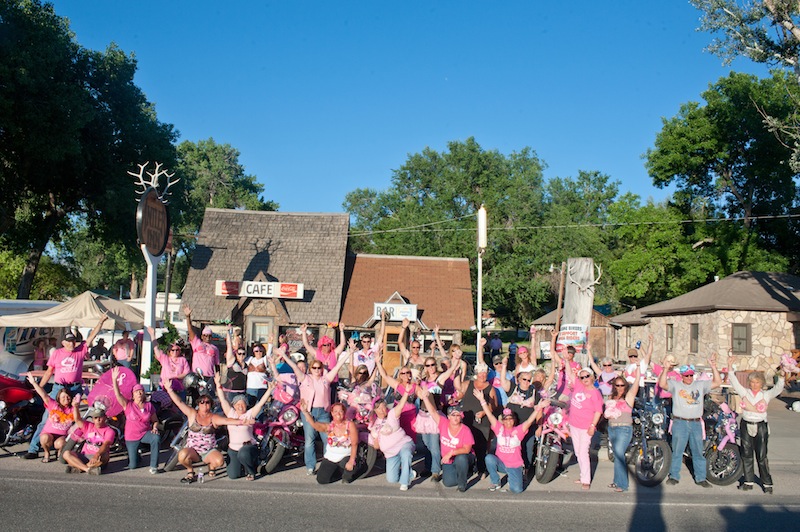
The Importance of Spirit Riders
“Spirit riders” is the term I use for people who make donations in support of a cause. You may be doing the riding, but spirit riders are the bread and butter of fund-raisers—and attracting and engaging them is the key to your success. To maximize awareness and funding for your cause, cast a wide net for participants. Here are some ideas that worked for our Conga Ride.
- Find fun ways to involve non-riders. Before leaving on my trip, I hosted a “Think-Eat-Drink-Pink” event attended mostly by friends who don’t ride at all. The event included donations by the venue based on sales, a breast/bra trivia contest, and a bra-decorating contest, for which people paid an entry fee. I took the decorated bras to my “Kickstands Up” party (read more about that below) and auctioned them off.
- Contact your local motorcycle dealerships and organizations. Several Conga riders and supporters wrangled sponsored events with motorcycle dealerships and motorcycle venues. For example, friends in Texas sold hot dogs and drinks at a motorcycle dealership during normal weekend business hours, and shoppers donated to the cause in addition to buying eats.
- Don’t be afraid to get silly. Conga riders in Idaho and northern Nevada held a party and silent auction at a bar/casino in Jackpot, Nev. Later that evening, both men and women modeled the hand-decorated bras, which were subsequently auctioned off.
- Cast your net along your route, not just at home. Friends and family along my route organized get-togethers involving businesses with a soft spot for the breast cancer cause. For example, in Kentucky, a restaurant owner with several family members who’d battled breast cancer donated a portion of sales from lunch the day I came to town and allowed me to pass the hat for breast cancer. In return, he got a TV news story and that great feeling of giving back to the community.
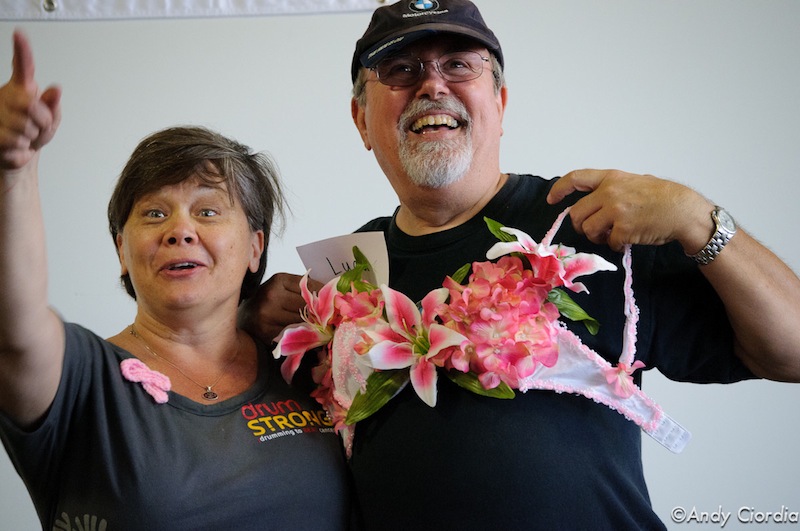
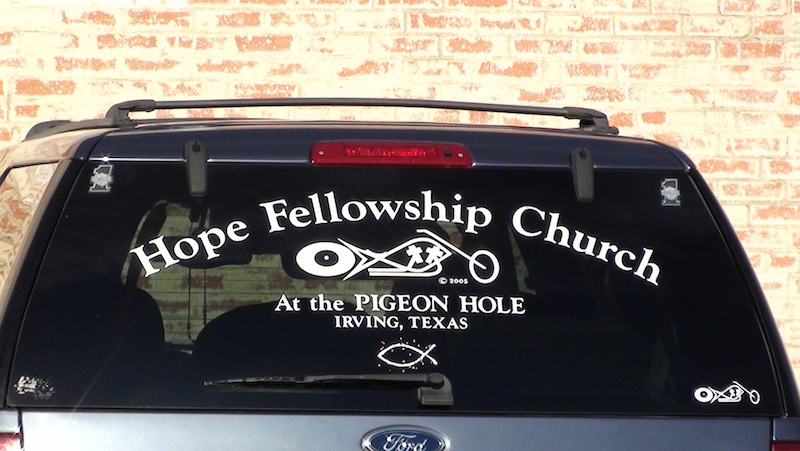
Donations for Dares
Consider getting your spirit riders to donate based on something you do on the road. For example, get them to pledge an amount for each state boundary sign with which you have your picture taken while holding a banner for your cause. Get them to double the pledge if you get complete strangers to hold the banner with you (which helps build awareness for your cause, too).
My first year riding the Conga, I had a mileage contest. People donated $5 to guess what my ending mileage would be for the chance to win a donated $50 gift certificate to a popular coffee shop.
When the Conga riders gathered in Wyoming, we engaged the locals in “roadside barbershop fund-raising.” I explain it this way in my book:
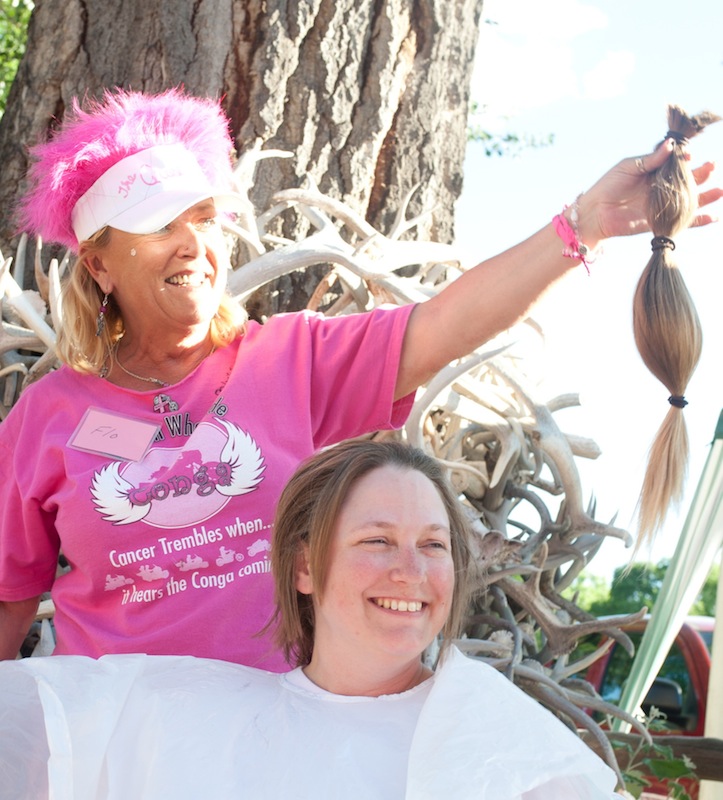
Wear Your Cause
Let’s face it—motorcycles always turn heads. So why not maximize on the opportunity? Because Conga riders raise money for breast cancer research, our cause is easily discerned by the pink bling on our bikes and riding gear. Other causes may not be as easily recognizable, but with some creativity, you can do it, too. For example, if you’re raising money for brain cancer, consider getting everyone in your group to cover their helmet with a brain sticker. Riding in the annual Marine Corps Reserves Toys for Tots Parade? Gift wrap your bike!
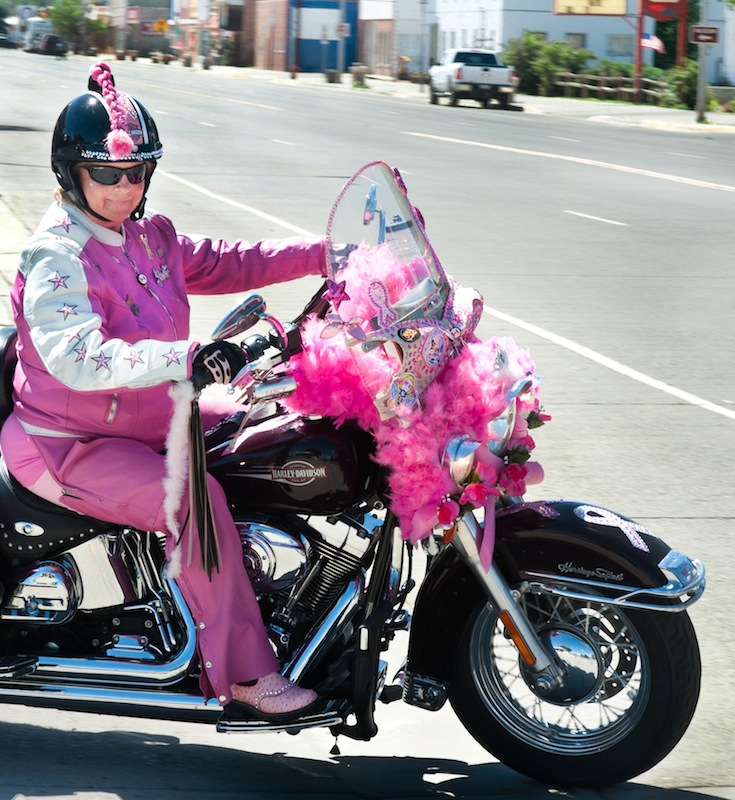
Transparency
One final thought about motorcyclists and fund-raising: I’ve seen people purchase items to sell at a fund-raiser with the expectation of making enough to donate to their cause and cover their costs. In most cases, however, the charity in question would be better served if these people simply made a contribution in the amount they would have spent on the food or merchandise they planned to sell.
Why? Let’s think this through. Lets say you’re selling 100 hot dogs at twice what you paid for them, but the last half of your hot dog sale is rained out. At the end of the day, you’re stuck with 50 leftover hot dogs—that means your costs are covered, but theres no “profit” left over for the charity. Don’t you feel crummy for not sending anything to the cause? Thus, you could have saved yourself the trouble by simply donating the cost of the hot dogs and materials to the charity. Alternatively, you might have considered selling or auctioning off donated items so that all monies collected could go to the cause.
If selling merchandise or food is part of your fund-raising goal, however, then you should always be transparent about how the proceeds will be broken down. To my way of thinking, if sellers plan to use part of the purchase price to cover their costs, then buyers should know exactly how much of their money will go to the charity. It confuses people, and could discredit the charity, when the amount of the actual donation is not disclosed. Sellers should always disclose whether all moneys raised will go to the charity or if it will receive only the proceeds left after subtracting expenses.
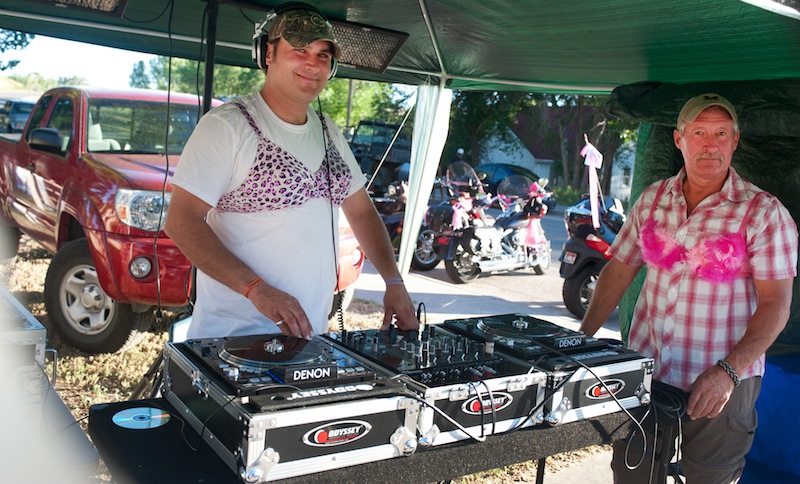
If 100 percent of an items sales price If 100 percent of an item’s sales price will not go to the charity, I recommend including a sign for each item that includes three things: the item’s sale price, the item’s cost, and the proceeds that will go to the charity for that item. For example, if you’re selling hot dogs as part of a fund-raiser, tell buyers exactly what dollar amount or percentage of the sales price will go to the charity. Is it a $3 hot dog with $2 going to the charity? Someone thinking they are donating $3 and getting a hot dog as a bonus might prefer to donate the whole $3 (and skip the hot dog) to maximize what the charity receives.
Always give people the opportunity to donate directly to the charity, and if possible, have a representative from the charity present at your event so that people can ask questions about how their donations will be used and ask for a receipt. Only the charity can issue a receipt. If you have any questions about what to do, ask your charitable beneficiary for guidance.
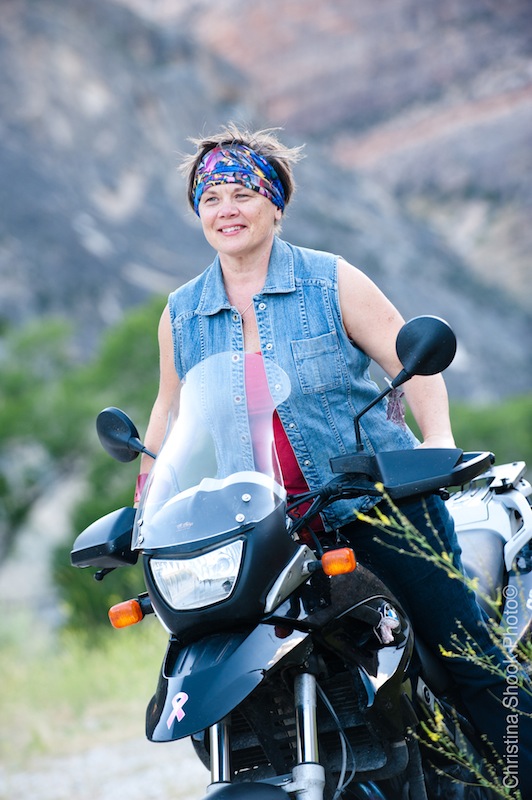
About the Author
Tamela Rich lives with her family in Charlotte, N.C., where she is a freelance writer of books, articles, presentations and speeches for business professionals. She based “Live Full Throttle: Life Lessons From Friends Who Faced Cancer” on two trips she took across the United States and parts of Canada with a pink bra strapped across the windshield of her BMW motorcycle to raise money for breast cancer research. When forced to travel by car instead of motorcycle, she knits compulsively; if she’s driving the car, she knits at stoplights. Autographed copies of “Live Full Throttle” are available at Tamela’s Web site and on Amazon.com.
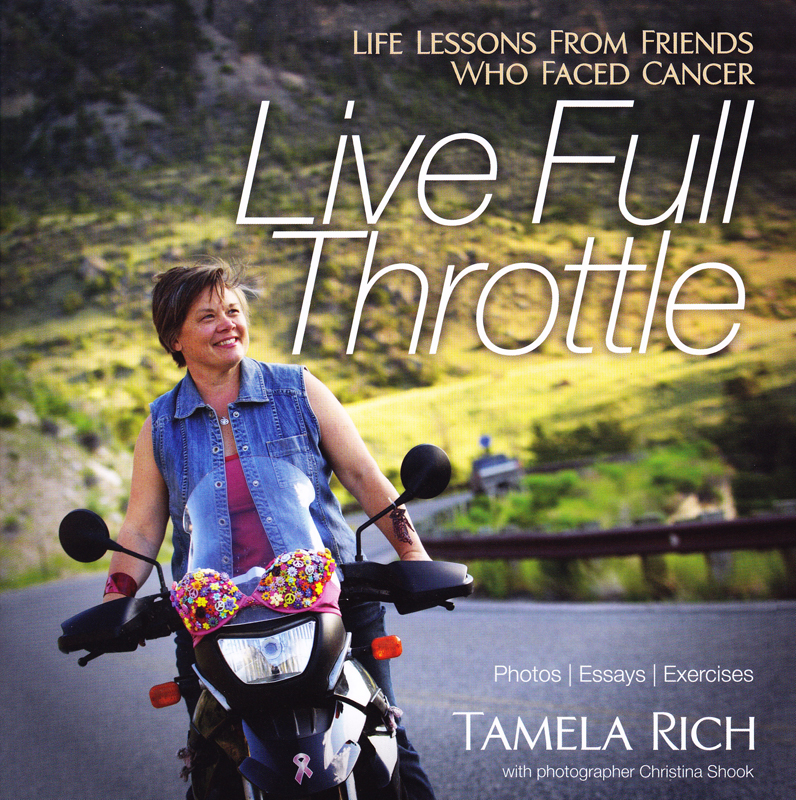
Related Articles
EXCLUSIVE VIDEO: Conga IV Riders Visit WRN
Book Review: “Live Full Throttle”
Countrywide Women’s Ride Gearing Up

I found this article very informative. My thoughts are that giving of yourself while raising funds for the cause is what furthers a cause and shows contributors that your stance has passion in what you are doing. People experiencing your enthusiasm provides them with a cause to support and they too look forward to the small successes. I feel that spreading the word, and having people pledge amounts for the miles to be conquered is enthusiastic for the supporters as well. Enthusiasm can be very contagious, and in being so, hopefully lucrative as well. Imagine: .01/per mile x 4400 miles= 44.00 x 60 people =$ 2640.00, and with the pledges they donate directly to the BCRF Web site. That is what I mean about giving of yourself. And today’s Internet allows people to follow the journey making them feel like they are directly involved.
That looks like my crochet pink ribbon Tamela is wearing! I couldn’t go so I crocheted a bunch of these and sent them to Tamela to use as fundraisers while she was on the road. So cool to see her wearing it.
What a great article! Some friends and I have started a “sister” group to Flo’s WWR Conga and we are calling it “NW Conga for the Cause.” This is being done with Flo’s blessing. We just hit on the idea a couple of months ago and have a lot to learn about Conga. Our first event will be this July 21 and 22. and based in Vancouver, Wa. Since we don’t have much planning time, we are just getting together as many riders as we can, splitting into groups of 15 to 20 and going to different areas each day to raise money for the cause. Next year, thanks to this great article, we should be able to accomplish much more.